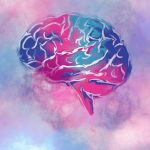
How big is a hospital bed’s carbon footprint? Pretty big, new research shows. One hospital bed alone was roughly equivalent to the carbon footprint of five Canadian households, according to researchers studying a British Columbia hospital during 2019. They identified energy and water use and the purchasing of medical products as the hospital’s primary energy hotspots, accounting for over half of the hospital’s yearly carbon footprint. “In our work, we often find that the biggest environmental footprints are where you least expect them to be. As the adage goes: ‘Out of sight, out of mind,’” said researcher Alex Cimprich. He is a postdoctoral fellow in the School of Environment, Enterprise and Development at the University of Waterloo. “The goal is to make hidden environmental footprints more visible so that we can start to manage them.” For the study, the researchers assessed thousands of products purchased by hospitals, using a combination of statistical sampling and calculations of carbon intensity — CO2 equivalent per dollar spent — to calculate carbon footprints. “The results suggest that hospital sustainability initiatives need to look further to achieve deeper emissions reductions,” Cimprich said in a university news release. “While transportation of patients and products supplied to hospitals and hospital waste are visible areas of environmental concern, other more hidden areas like the supply-chains of medical products could have much bigger environmental… read on > read on >
























-300x200.jpg)













